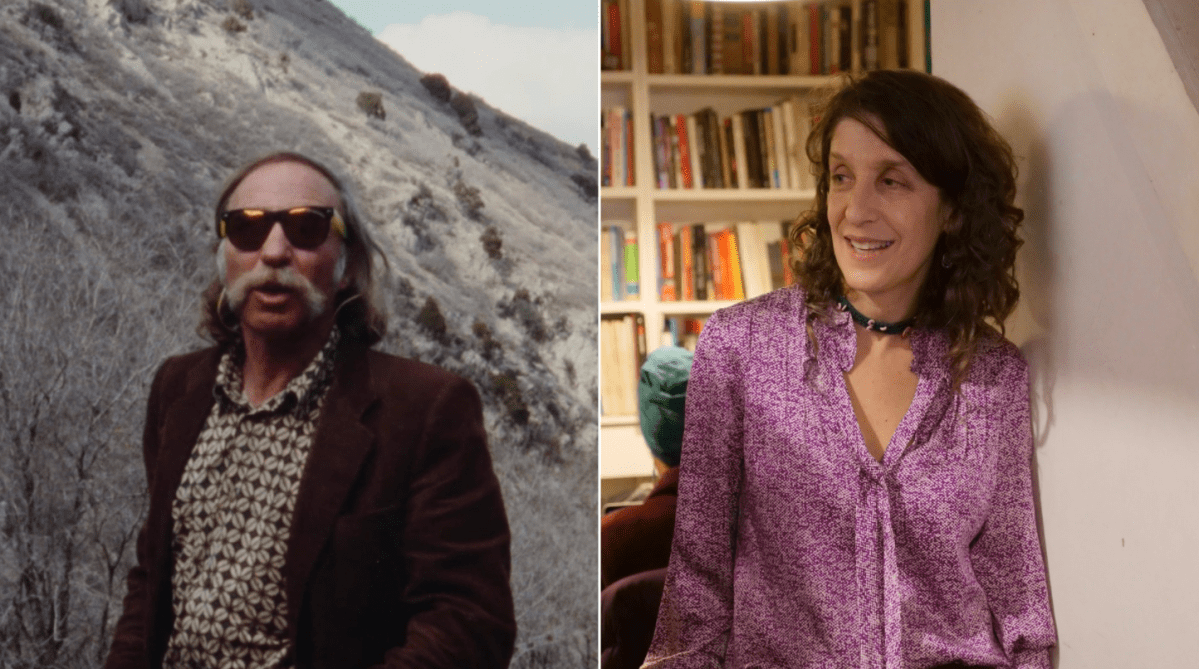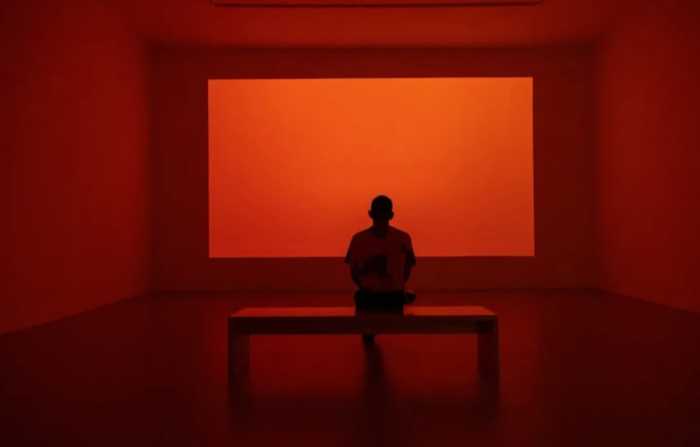They say the bond between fathers and daughters is quite special. Just ask Brooklyn-based artist Lynne Sachs, who was so determined to find out what made her enigmatic dad tick, she created an observational documentary about him.
The feminist filmmaker/director seems to view life through the lens of a painter/poet: a winning combo that has resulted in a series of artistic experimental and avant-garde works that draw the audience into Sachs’ private world. Her newest boundary-crushing offering, titled “Film About a Father Who,” has been 30 years in the making. And now, she’s sharing this fascinating, family-focused doc with viewers across the country.
In Queens, the acclaimed film — a Cinema Guild release — will debut Friday, Jan. 14, in the Museum of the Moving Image’s Virtual Cinema. The feature is part of a 20-film online retrospective of the artist’s celebrated body of work, which spans more than three decades. You can experience “Lynne Sachs: Between Thought and Expression,” now through Jan. 31. To learn more about the artist’s films and how to watch them, click here.
“Over a 30-plus-year career, Lynne Sachs has charted a formal path defying conventional categorization. Each of her films is a self-reflexive meditation into the psychic origins and intellectual process of its own making, issuing from a space between thought and expression,” said Edo Choi, MoMI’s assistant curator of film, who organized the retrospective.
“This is true of her work as early as ‘The House of Science’ and as recent as her latest and most personal film so far, ‘Film About a Father Who.’”
During a recent interview, Sachs spilled about her papa’s escapades.
“He has a spirt of adventure, refuses to follow any rules, relishes seeing his children grow up, and seems to be very capable of keeping a lot of secrets,” she told QNS.
When asked to complete this sentence: “This film is about a father who,” she offered, “… is a different man for everyone who knows him, whether you have eaten dinner with him, hiked with him or only met him on the movie screen. He adds another dimension to the word complicated.”
“My film tries to understand one father through the eyes of nine children. We each have our own experiences, memories and interpretations of his place in our lives,” Sachs added. “For me, my father was continuously supportive of me as a woman, an artist and a mother. He always treated me with respect. Unfortunately, this was not true for all of my siblings. This is often the case in families, and it’s the job of the sisters and brothers in the family to find a terrain on which they can love each other on their own terms.”
The art of filmmaking is really about how well you tell a story, and Sachs injects a dose of nostalgia, family dynamics and a sprinkling of psychology into her film. She paints an interesting, semi-revealing portrait of a secretive bon vivant from Park City, Utah, as seen through the eyes of his children, grandchildren, ex-girlfriends, ex-wives and especially his own mother.
The film features Ira Sr., who back in the day, made a modest living as a hippie entrepreneur, and eventually became a proud father of nine (now aged 25 to 59). Also featured in the film are the artist, her brother Ira Sachs Jr., who is also a filmmaker, and their immediate family (including their mom and grandma), as well as many half brothers and sisters.
For this 74-minute work, developed between 1984 and 2019, the artist — who had been experimenting with different filmmaking modes — shot 8mm and 16mm film, videotape and digital images.
“I feel most comfortable with 16mm because I need to shoot with this kind of camera without sound. My eyes are always more observant with this camera,” she said. “Furthermore, I have had the same $400 wind-up, non-electric Bolex camera since 1987, so it’s an extension of my soul.”
Judy Garland once said, “I can live without money, but I cannot live without love.” When asked why her dad was always searching for amoré, Sachs explained, “It took me a long time to realize that his traumatic childhood, which included being separated from his mother for 13 years, left an indelible mark. In the film, he also claims that ‘I am not like a swan. I don’t stay with one partner my whole life.’ So, maybe long-term romantic love was never really his goal.”
Sachs explores not only the qualities she loves most about her father, but also the challenging aspects of their relationship.
“My father has boundless compassion, but he compartmentalizes his life so much that you have to share this love with so many people you will soon lose count,” Sachs shared. “I love that he is an iconoclast, that he only likes to hike on mountains that have not yet been tamed and that he lets his hair and life become tangled. Since he always did what he wanted when he wanted, many people got hurt along the way … even me, and this continues to leave a wake of pain.”
Describing her family members’ reactions to her latest project, Sachs told QNS, “My sisters and brothers have really rallied behind the film and it has in a way brought us closer. My father cried the first time he saw it. He told me he hoped to ‘do better in the future.’ I also think he got a kick out of seeing a feature-length film all about the life he led, all the unusual paths he followed. Most of us will never have this chance.”
She added: “I actually completed making the film after my grandmother’s death, which ultimately was an opening to my discovering my two ‘hidden’ sisters.”
Sachs believes that her film has changed some people’s perceptions of her now-84-year-old father.
“Many people who thought they knew Ira Sachs Sr. very well announced to me that my film provided more layers to his life than they could ever have imagined. Everyone knew a part of him, but none of us did or even now do know the whole story. It is important to me to recognize that he is not a ‘character’; therefore, like all of us, he maintains some parts of him that are his and his alone.”
Three of Sachs’ key early works – “Drawn and Quartered” (1987), “The House of Science: a museum of false facts” (1991), and “Which Way Is East: Notebooks from Vietnam” (1994) – will also be presented.
Along with the screenings, the museum will present a new recorded dialogue between Sachs and Choi, covering the breadth of Sachs’ career. This exclusive video will be available to those who purchase tickets to any of the screenings.



































